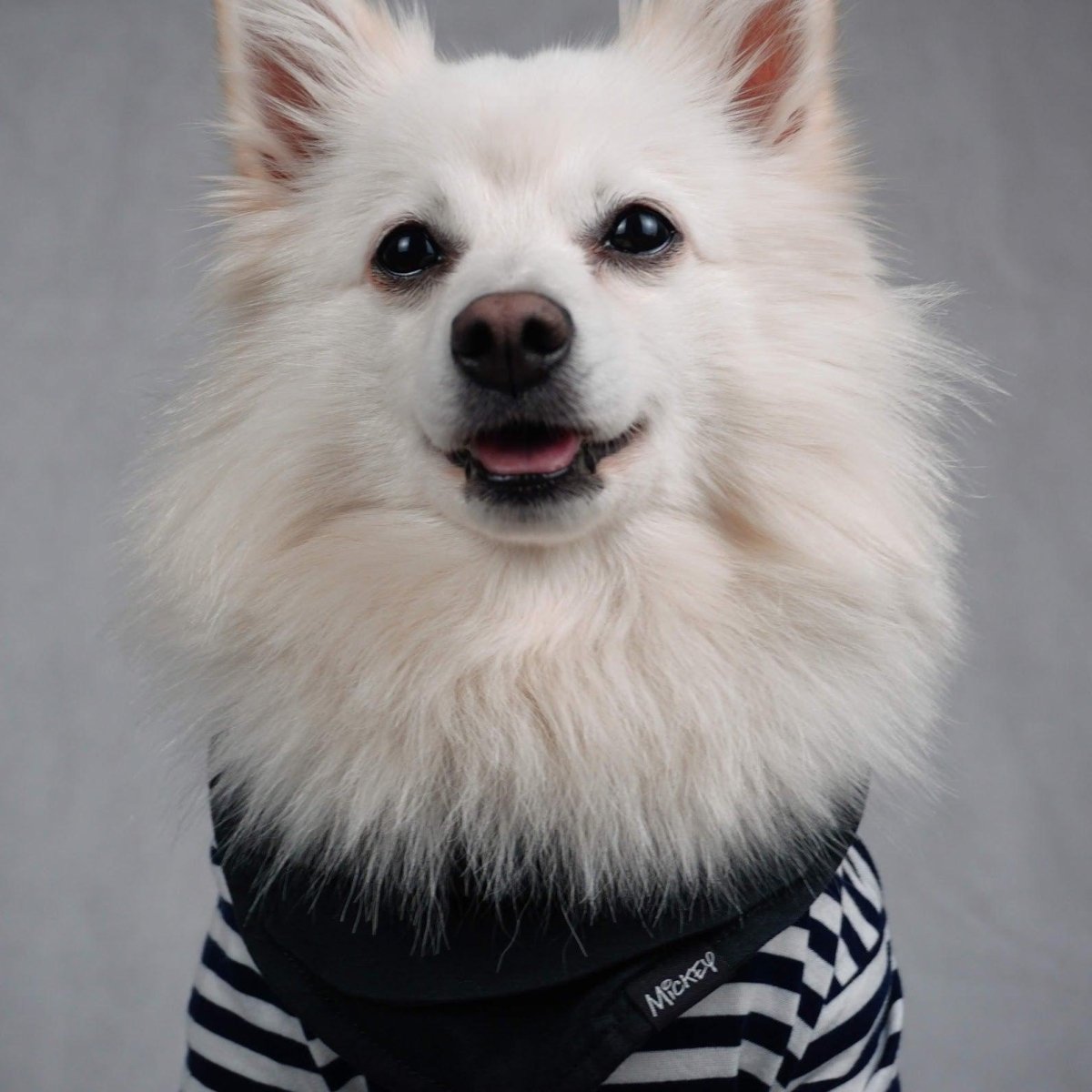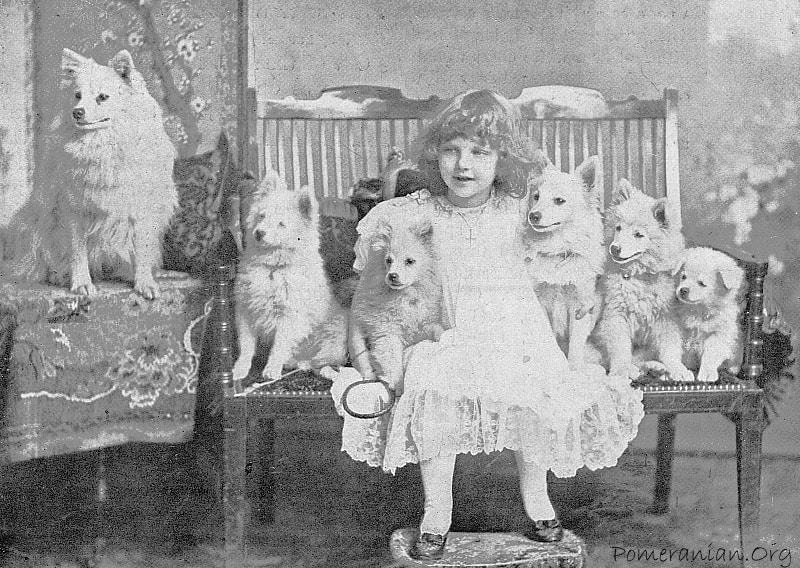Pomeranian vs German Spitz - What are the differences and origins?

Introduction
As a German Spitz mum, I am often asked if my dog is a Pomeranian. Most frequently, when I answer that she's a German Spitz, I'm told "oh, but she looks just like a Pomeranian". This is not surprising at all! The history of the Pomeranian vs German Spitz is something that I find fascinating. Let's dive in!
Where did the Pomeranian originate?
The German Spitz is among the earliest dog breeds originating from Europe. Alert, energetic, as well as dedicated, these pups have some of the best qualities among any canine breed around.
German Spitzes go by numerous other names such as Spitz, German Spitz Mittelspitz, Deutscher Spitz, and ... Pomeranian!
The first mention of the German Spitz dates back to 1450. Count Eberhard Zu Sayn of Germany praised them as brave protectors of his homes and fields. Many German Spitzes inhabited the province of Pomeranian, in the south coast of the Baltic Sea, which would now be part of Northern Germany and Northern Poland.

The different variations of the German Spitz dog breed
The German Spitz comes in different sizes (and many different colours, too). Here is where everything gets clearer. Let's see:
There are 5 different sizes. As an originally german breed, the names on the left are the original german names of the breeds in the 5 different sizes, from biggest to smallest. On the left side is the size and english translation:
- Wolfspitz / Keeshond
- Grossespitz / Giant spitz
- Mittel Spitz / Medium spitz
- Klein Spitz / Miniature spitz
- Zwergspitz / Dwarf Spitz (Pomeranian)
It is important to remark that the Zwergspitz, or Pomeranian, in the 18th century was not the same size as the 1.5-3kg / 3-7 pounds Pomeranian that we know today.

How does the Pomeranian name originate?
As you may be imagining, the name comes from the region in which they were most popularly in their origins, the region of Pomeranian dog in Germany.
While the original name of the breed is Zwergspitz (Dwarf Spitz), and if you have a pure breed Pomeranian this may be the name that you see in the pedigree, the name of Pomeranian became more popular when Queen Victoria fell in love with the breed.
Queen Victoria became an exhibitor and breeder of Zwergspitz during her time and reduced the breed's by 50% from the previous size. The popularity in England gave birth to the name Pomeranian, which is much easier to pronounce than the German name Zwergspitz.
It is also believed that the first world war may have accelerated the transition, and public approval, to the new name due to the anti-german sentiment.
Appearance
How much does a Pomeranian and German Spitz weigh and measure?
Before we talk about measurements, let's clarify that when we speak about German Spitz we are talking about the Mittel (medium) Spitz. The Mittel Spitz is the most popular among its siblings that maintained the Spitz name.
As we've mentioned before, the main difference between the two sub-breeds is in the size. The German Spitz will weigh between 7 and 14 kg for a female dog or 11 to 18 kg for a male dog. The female Pomeranian will weigh between 1.5 and 3kg, while the male Pomeranian will weigh between 2.5 to 5kg.
A German Spitz will have a height from 30 to 38 cm, while a Pomeranian will be as tall as 18 to 30 cm.
Fun facts about Pomeranians and German Spitz
- Two Pomeranians were on board of the world's most famous boat, the Titanic. luckily for them, they survived the sinking floating to safety on lifeboat number 7. Probably lucky little fellas part of the high society.
- Mozart had a Zwergspitz (Pomeranian) who accompanied the composer until his death and during the composition of the Requiem.
- A German Spitz watched Michelangelo paint the Sistine Chapel while laying on a silk pillow.
- The word Spitz means "pointed" in German and it derives from the pointy snout. For this reason, some people call the Spitz the "Fox Dog".
- Spitzes originally pulled sleds and were reindeer herd dogs.
- The original Spitz dogs were created to guard farms and merchants. They were trained to howl and bark to protect the money of the merchants. This is one of the main reasons why your Pomeranian or German Spitz is very vocal. They are simply fulfilling their duty.
Do you have a German Spitz or a Pomeranian?
If you found this article interesting or want to share your experience as a Pomeranian / German Spitz owner, leave a comment in the box below!
Also, don't forget to see our range of Dog presents for Owners. Just remember to pretend you didn't see the gift beforehand!






Hola, yo he adoptado un Spitz Alemán. De dos años y medio, se deshicieron de él por su agresividad. Dado que van a ser padres y temían, por la integridad física, de su futura hija.
Sus anteriores dueños, se gastaron lo imposible. En varios etologos y adiestradores caninos en positivo. También fue tratado, con medicación por su veterinario. Emitiendo los peores informes, después de que el tratamiento y el adiestramiento, no surtieron efecto. Aconsejando a los mismos, darlo en adopción, a una asociación o protectora . Ante el posible riesgo de ataque, a su hijo.
Es tan cariñoso, como agresivo, cuando le dan los arrebatos. Lo tenían , muy bien tratando, como el hijo de la vieja criado a la mano.
Pero nunca le podían, acariciar comiendo o con un juguete nuevo. O cuando a él le daba la reactividad.
Conseguí hacerlo , yo el mismo día en menos de 24 h. Pero sigue con periodos reactivos y agrede a mí otro perro, que es muy bueno con el y encima le protege.
Un saludo !
GRACIAS.
This is really amazing to learn! I have a Pomeranian and I didn’t know my pom was part of the same family as a German Spitz…but it all makes sense now! they look very similar.. slightly bigger, but definitely similar